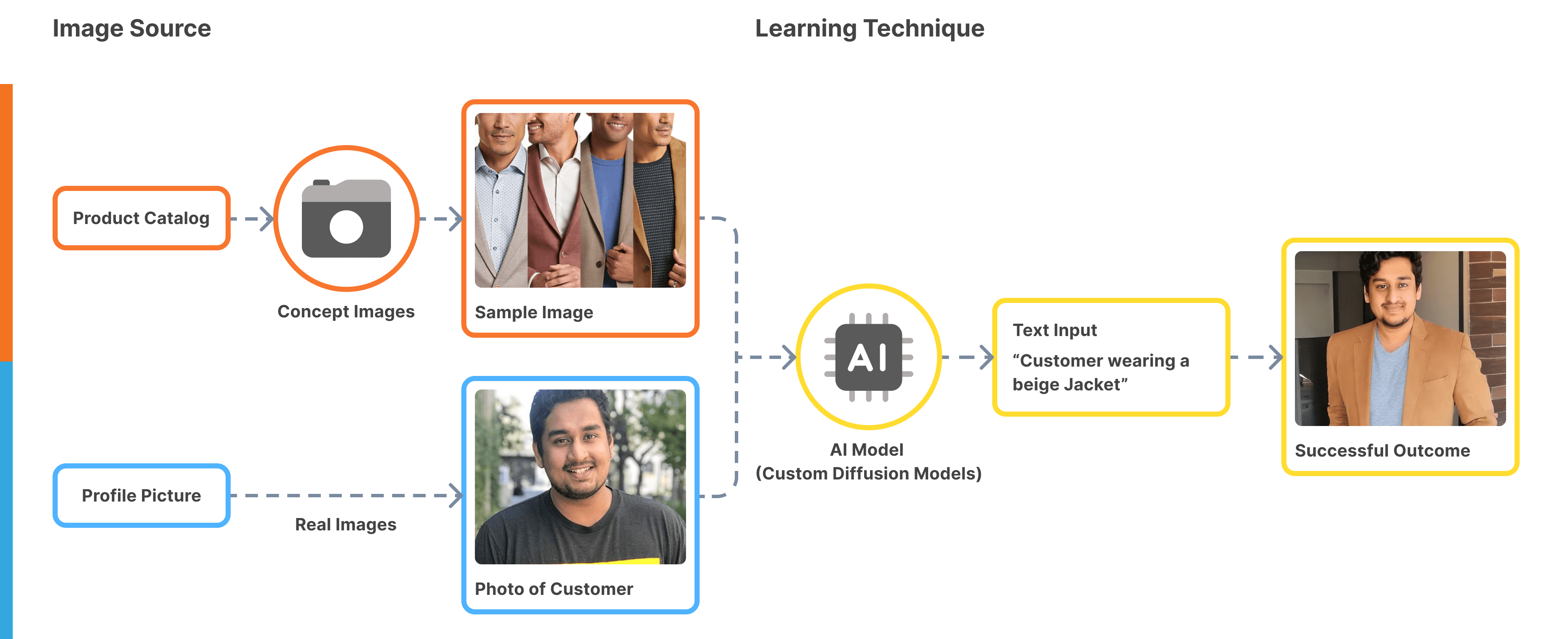Goal & Purpose
Generative AI has the potential to accelerate the creative process for product writing, FAQs, product images, and writing scripts within larger applications.
Iterate has integrated generative AI to be accessible and deployable directly within the Interplay® Application Platform. Combining the power of generative AI with the Interplay low-code platform promises to accelerate the pace that businesses can build differentiated, compelling, and modern digital experiences for their customers, employees, and partners.
Advantages of GenAI
Code
Images
Video
Text

The Challenge
Generative AI simplifies content creation for text and images, but how can enterprises bring generative AI tools into their existing applications and creative workflows? ChatGPT, Stable Diffusion, and other OpenAI tools can be brought into the enterprise stack for an integrated application development workflow, including private language models, in-house branded image generation, and AI script generation for faster code development.
Branded AI Image Generation
Interplay offers brands and designers the ability to generate needed images from text prompts based on training images already within the brand’s intellectual property. Powered by Stable Diffusion and iteratively-trained deep learning models, brands can upload brand images, color palettes and other assets, enter text descriptions, and rapidly produce new images to enhance their applications and customer experiences. Interplay can combine a customer’s profile photos from their loyalty profiles with existing product photos to generate new product photos where your customers can see themselves directly using your products.


Integrated Large Language Models
Interplay brings large language models directly into the low-code application flow, where it can be tied seamlessly to existing databases with product descriptions, customer questions, chatbots, and even promotion algorithms. External large language models can bring a rich set of ‘common sense’ language to almost any environment, which is especially powerful within a low-code application flow.
System Flow




Codex
Public Large Language Models such as ChatGPT and GitHub CoPilot have the ability to convert natural language prompts into code suggestions, snippets, and even complete programs. However, any conversation with the AI will be fed back in its entirety to the public model, without any regard for sensitive and proprietary information. Additionally, code generated by LLMs almost always requires manual editing and bug fixing within a separate code editor or environment, ultimately driving up completion time.
Codex offers natural language code generation directly within nodes in Interplay’s Application Platform, allowing for rapid testing and experimentation. Each node maintains Interplay’s drag-and-drop capabilities and all conversations and code generated by Codex are limited to the scope of the Application, preventing sensitive information from being exposed and fed back into the model.
29 Points to Consider for Private Enterprise LLMs

